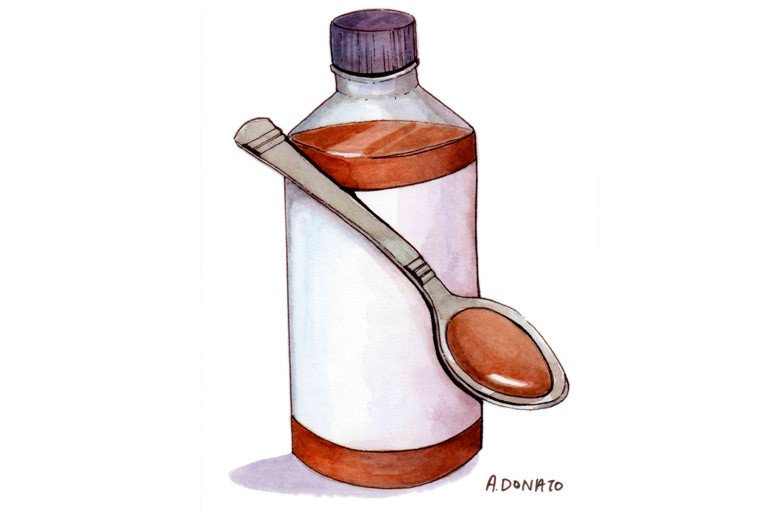
Common Names
- Hoxsey herbs
- Hoxsey formula
- Hoxsey method
For Patients & Caregivers
Tell your healthcare providers about any dietary supplements you’re taking, such as herbs, vitamins, minerals, and natural or home remedies. This will help them manage your care and keep you safe.
Hoxsey Herbal Therapy is not a cancer cure and some of its components may be dangerous.
Hoxsey herbal tonic was developed by Harry Hoxsey's great grandfather after his horse was cured of a leg tumor by eating wild herbs. Hoxsey combined these herbs with home cancer remedies popular at the time to create a tonic taken by mouth, as well as a preparation for topical application. Hoxsey's remedies were promoted through the first half of the 20th century, but eventually the U.S. government forced him to stop selling medicines without a medical license.
According to Hoxsey, the tonic stimulates detoxification of the body while normalizing cell metabolism. However there is no proof for this. His tonic has never been tested in the lab, in animals, or in humans, and there is no evidence to support the claim that it has anticancer effects in the human body. Hoxsey also claimed that his topical medicine would selectively kill cancer cells, but the caustic ingredients in the ointment are known to burn healthy tissue as well.
The American Cancer Society strongly urges cancer patients not to use the Hoxsey treatment.
- To treat cancer
No scientific evidence supports this use. Although some researchers have attempted to follow patients who used Hoxsey herbal therapy at clinics in Mexico, studies could not be conducted as the record keeping was poor.
- The topical paste and powder have caused severe burns, scars, and disfigurement.
- High levels of iodine from the potassium iodide can cause pimples, excessive secretion of the eyes or nose, impotence, and inflammation of salivary glands.
- Buckthorn, one of the ingredients in the herbal tonic, is a violent laxative, and can cause abdominal pain, dehydration, anxiety, decreased respiration, diarrhea, nausea, trembling, and vomiting.
- Cascara, one of the ingredients in the herbal tonic, is a laxative and can cause abdominal pain, cramping, diarrhea, discoloration of urine, fluid and electrolyte imbalance, softening of the bones, fat in the feces, vitamin and mineral deficiencies, and vomiting.
- Licorice, one of the ingredients in the herbal tonic, can interact with the body's hormones and lead to imbalances in water, sodium, and potassium retention. High blood pressure, fatigue, muscle pain, irregular heartbeat, low blood levels of potassium, and decreased libido can result.
- Pokeweed, one of the ingredients in the herbal tonic, causes nausea, vomiting, diarrhea, and abdominal cramps. Ingestion has been associated with illnesses requiring hospitalization, and has caused deaths in children.
For Healthcare Professionals
Hoxsey Herbal Therapy is an alternative therapy that consists of herbal tonics and restrictive diets, and is promoted as a cancer cure. It is illegal in the United States, but has been available at clinics in Tijuana, Mexico. According to the inventor Harry Hoxsey, the principal “brown” tonic contains potassium iodide, licorice, red clover, burdock root, stillingia root, barberry, cascara, pokeweed, prickly ash bark, and buckthorn bark. The diet involves eliminating pork, vinegar, tomatoes, pickles, carbonated drinks, alcohol, bleached flour, sugar and salt, and emphasizes iron, calcium, vitamin C, yeast supplements and grape juice. Hoxsey claims the treatment detoxifies the body, strengthens the immune system, balances body chemistry, and allows the body to digest and excrete tumors. Superoxide dismutase, vitamin B12, Gerovital (a mixture of procaine hydrochloride and vitamins), “Prolobin liver,” TST-100, rosette cactus, Koch Antitoxins, BCG vaccine, and Shulte’s medications sometimes are included in the regimen.
Hoxsey was convicted many times for practicing medicine without a license. The U.S. government reported that the 400 patients Hoxsey claimed to have cured never had cancer, were cured before receiving his treatment, still had cancer, or had died from the disease (2). The National Cancer Institute evaluated 77 case reports submitted by Hoxsey and concluded that none showed efficacy (2). No clinical data support the value of this therapy.
The American Cancer Society strongly urges cancer patients not to use the Hoxsey treatment, as no objective evidence exists to support its efficacy (2).
- Cancer
Hoxsey claims that the internal formulation “stimulates the elimination of toxins that poison the system, thereby correcting the abnormal blood chemistry and normalizing cell metabolism.” His head nurse added that it restores acid/base balance, normal metabolism, and immune function, and “deals with the DNA.” None of these claims is substantiated by scientific data. The herbal tonic was developed by Hoxsey’s great grandfather, whose horse was reportedly cured of a leg tumor after eating wild herbs. Hoxsey combined these herbs with home remedies to create the “brown” tonic. In vitro and animal studies conducted with individual components (e.g., licorice, red clover, burdock, pokeroot, stillingia, barberry - see individual monographs) indicate possible anti-tumor and immunostimulant properties, but their concentrations and activity in the tonic have not been determined (1) (2).
External paste and powder: Severe burns, scars, and disfigurement can occur with use of the external treatments.
Iodine toxicity: “Iodisms” can result from intake as low as 60 mg/day or long-term use, causing pimples, excessive secretion of the eyes or nose, impotence, and inflammation of salivary glands.
Buckthorn: A violent laxative, causing abdominal pain, dehydration, anxiety, decreased respirations, diarrhea, nausea, trembling, vomiting.
Cascara: Only approved for short-term use. Laxative effects can cause abdominal pain, cramping, diarrhea, discoloration of urine, fluid and electrolyte imbalance, osteomalacia, steatorrhea, vitamin and mineral deficiencies, vomiting.
Licorice: Hypertension, lethargy, muscle pain, cardiac arrhythmias, sodium retention, hypokalemia, hyper-mineralcorticoidism, pseudo-hyperaldosteronism, decreased libido in men, and suppression of scalp sebum secretion
Pokeweed: Nausea, vomiting, diarrhea, abdominal cramps. Ingestion has been associated with illnesses requiring hospitalization, and has caused deaths in children and heart block.
(2)
Potassium iodide has been found to interact with the following medications:
Lithium: Concomitant use has been found to cause hyperthyroidism.
Anticoagulants: Decreased effectiveness.
(4)